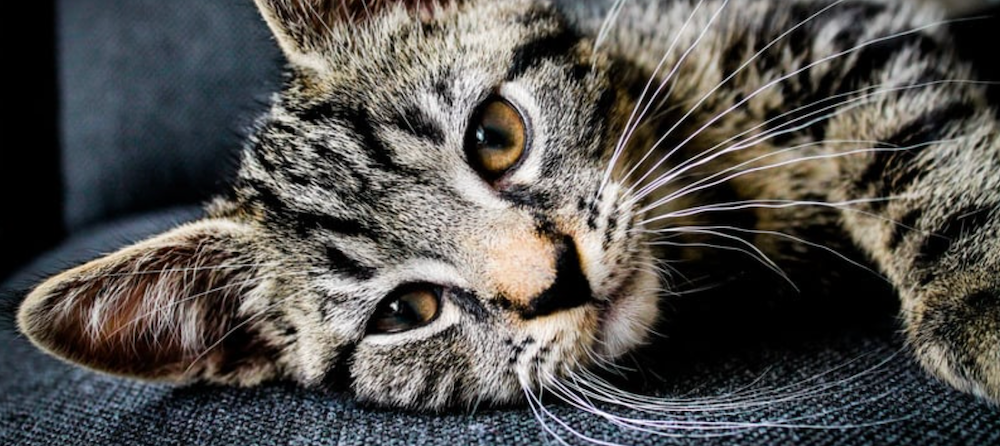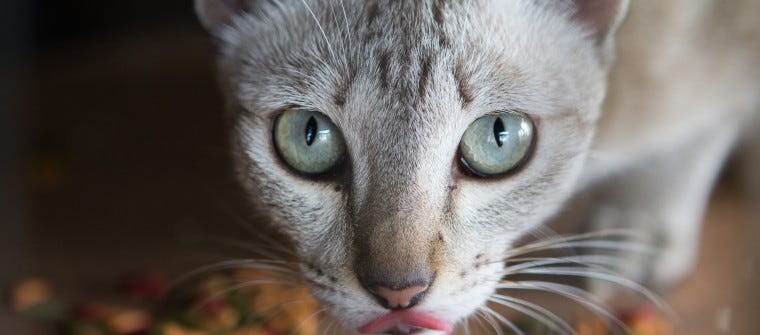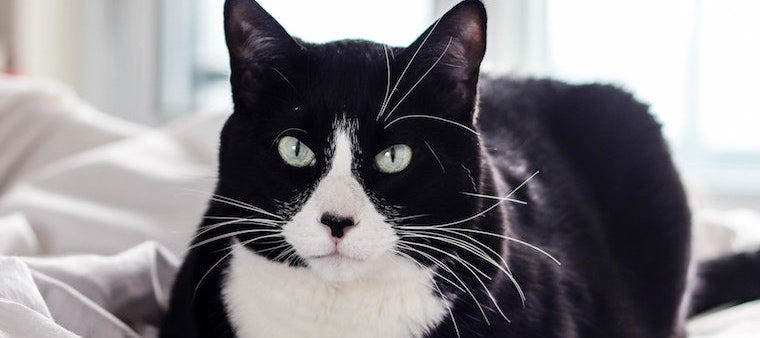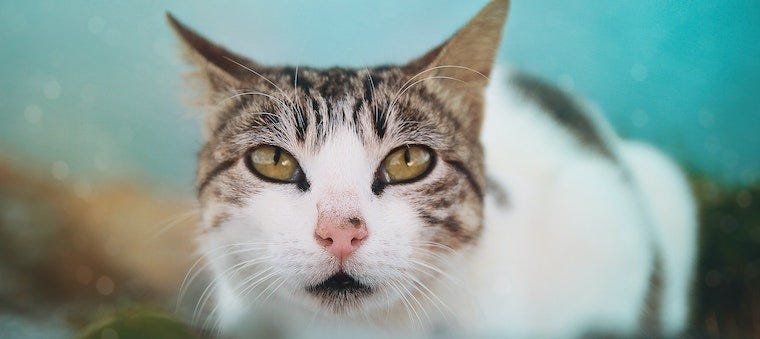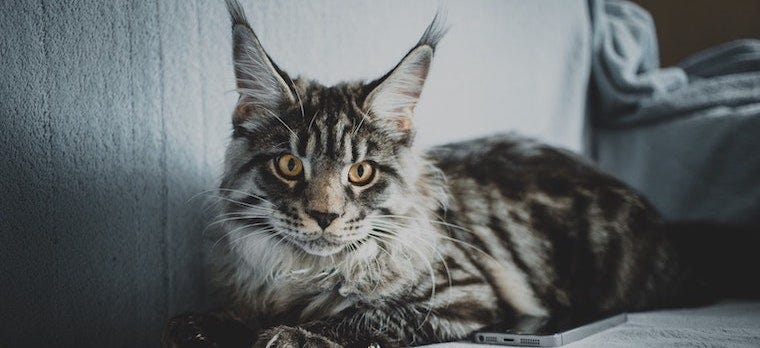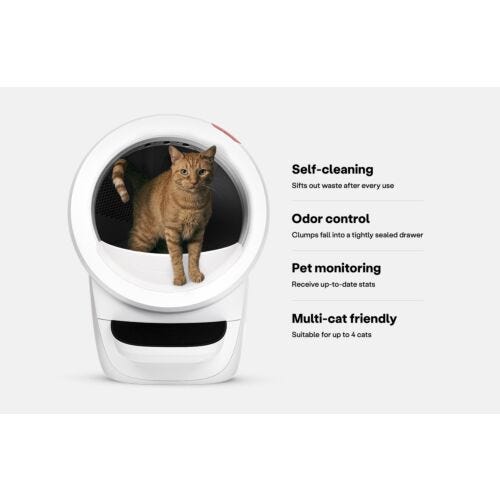Ever wonder why cats have whiskers? Turns out that they’re not just meant to give your cat a more majestic look. Your cat’s whiskers actually serve a few vital functions in their everyday comings and goings. This is due to the fact that your cat’s whiskers are actually a different type of hair called vibrissae hairs. Though humans do have some vibrissae hairs (in our nostrils), it’s safe to say that cats put theirs to better use.
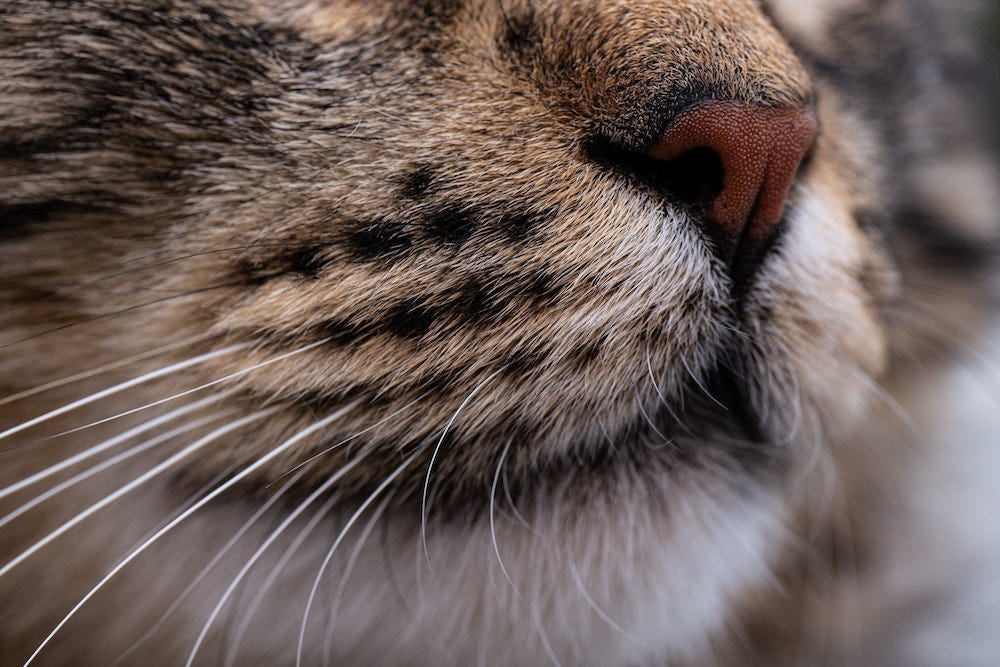
So, why do cats have whiskers?
Let’s break down the purpose of cat whiskers.
Directions and spatial awareness
A cat’s whiskers are quite coarse, contain an abundance of nerve endings, and are more deeply rooted than the rest of their hair. This makes whiskers ideal for helping your cat perceive what’s ahead as they charge nose first into unchartered territory. The most obvious whiskers, which tend to appear in even the most rudimentary drawings of cats, are the muzzle whiskers, or those protruding from either side of your cat’s nose. Your cat relies on these muzzle whiskers to perform two essential functions.
The first is assisting with directional orientation. We’ve discussed how cats see well in the dark, but their whiskers also assist them in avoiding obstacles by sensing slight changes in the direction of an air current. Such a directional shift can indicate an impediment to their forward march.
Similarly, and perhaps more well known, is the whisker’s value in enhancing your cat’s spatial awareness. The muzzle whiskers are supposed to be approximately the same width as your cat (though feline obesity can skew this proportion), so your cat can test whether or not they will be able to fit through a tight space by using their whiskers as a measuring device.
Protecting the eyes
Your cat also has a few whiskers that protrude from above each eye, almost like your grandpa’s eyebrows. These eyebrow whiskers, though less iconic than the muzzle whiskers, are just as vitally important. When your cat is walking or running through tall grass or low-hanging branches, these whiskers trigger an automatic blinking reflex to protect your cat’s precious eyes. When a potentially harmful item (including a human hand) comes within grazing distance of these whiskers, your cat will involuntarily blink to protect their eyes.
Facilitating hunting
Do cats have whiskers on their legs? Yes! Even less well known than the eyebrow whiskers are the carpal whiskers that exist on the inner side of your cat’s wrists. Take a look—they’re there.
These are most crucial when your cat is out hunting, and they aid in a couple major ways. Just as sensitive as the eyebrow and muzzle whiskers, and capable of detecting the slightest movement, the carpal whiskers allow your cat to feel any motion in a captured prey. Also, because of cats’ inability to see fine detail at close range, these whiskers play a vital role in helping your cat situate their prey so as to position it perfectly for the fatal blow.
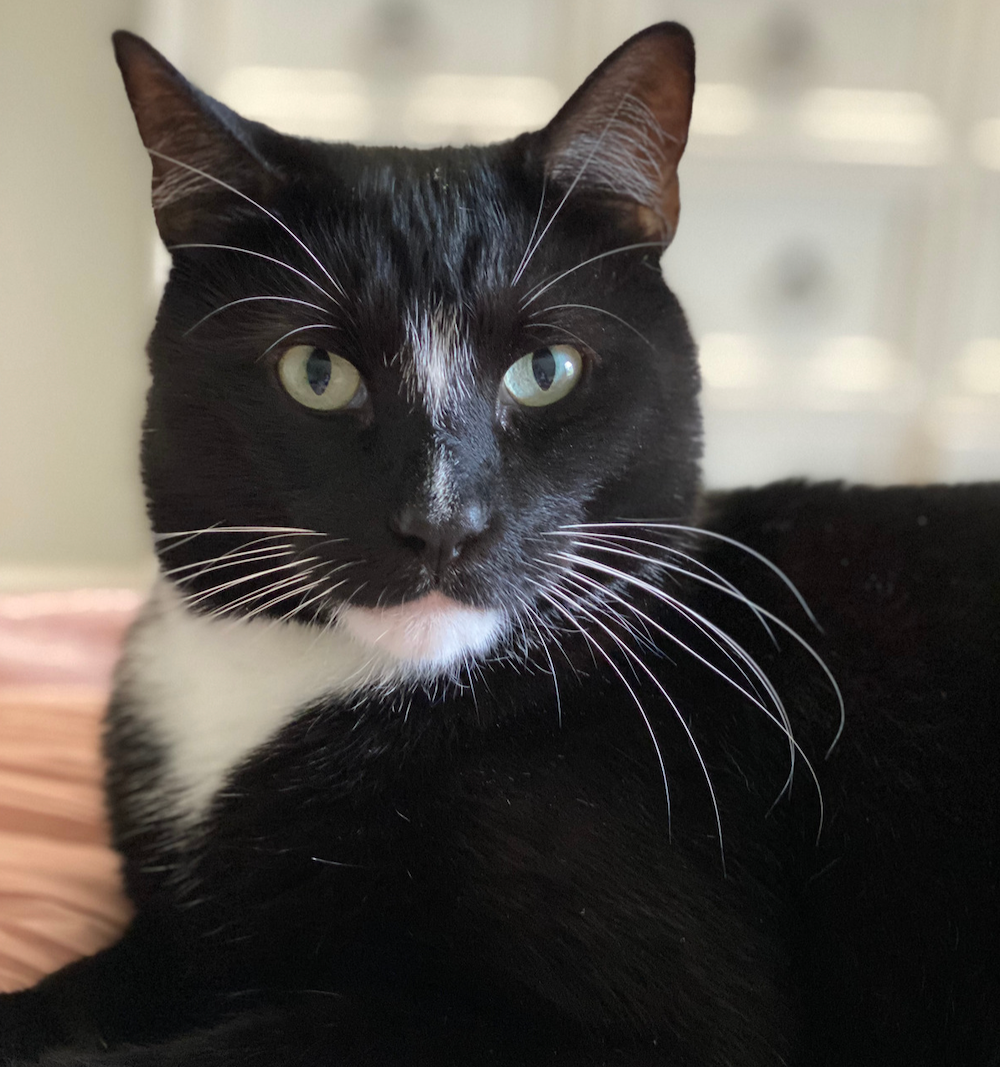
How many whiskers does a cat have?
Although it can vary from cat to cat (and breed to breed), most cats have 24 muzzle whiskers: 12 on each cheek, arranged in four rows. They also typically have 3 to 6 whiskers above each eye, 3 to 6 whiskers on each wrist, and a few whiskers on the chin.
Can you trim cat whiskers?
Your cat’s whiskers are extremely important in many different aspects of their life, and so it’s of the utmost importance to never trim or remove your cat’s whiskers. Not only will it prevent your cat from going about their business as they do naturally, but, because of the density of nerve endings and the sensitivity of these hairs, it can actually cause your cat pain.
Do cat whiskers grow back?
Don’t fret if you find a loose whisker on the ground. It might have you wondering, do cats shed whiskers? Indeed, cat whiskers fall out, but they grow back again, too. According to PetMD, it can take between 6 weeks and 3 months for a whisker to fully grow back. And sometimes cat whiskers grow back as a different color than they were before!
Why are my cat’s whiskers so long?
As stated earlier, muzzle whiskers are supposed to be approximately the same width as your cat to help with spatial awareness. If your cat has what appears to be unusually long whiskers, it’s likely because they are a large cat breed with a naturally wide body.
Alternatively, your cat’s whiskers may just be very apparent and therefore seem longer than you might expect. A common example of this is black cats or tuxedo cats with white whiskers. The high contrast between fur and whiskers is magnetic, indeed!
Do hairless cats have whiskers?
A cat without whiskers? It may sound unnatural, but many hairless cat breeds lack whiskers. Sometimes whiskers are short or broken on the hairless breeds that do sport them.
Sphynx cats, the most popular hairless cat breed, generally do not have whiskers or eyelashes. Sphynx and other cat breeds without whiskers are at somewhat of a disadvantage with directional orientation, spatial awareness, and eye protection compared to other cats. Along with their hairlessness, a lack of whiskers is an important reason why these cats should never be outdoor pets!
Whisker fatigue
Pet parents should also be aware that cats (and dogs) can experience whisker fatigue. This is a sort of sensory overload and occurs when your pet’s whiskers touch too many things in the course of their day—especially unavoidable things like the sides of their food and water bowls.
One of the easiest ways to combat whisker fatigue is with food and water bowls that are wide enough to accommodate your cat's whiskers. Replace narrow and small food dishes with wide, shallow, or even flat bowls. Your kitty and their sensitive whiskers will thank you!
Sources:
Photo credit: Katelyn Greer via Unsplash
